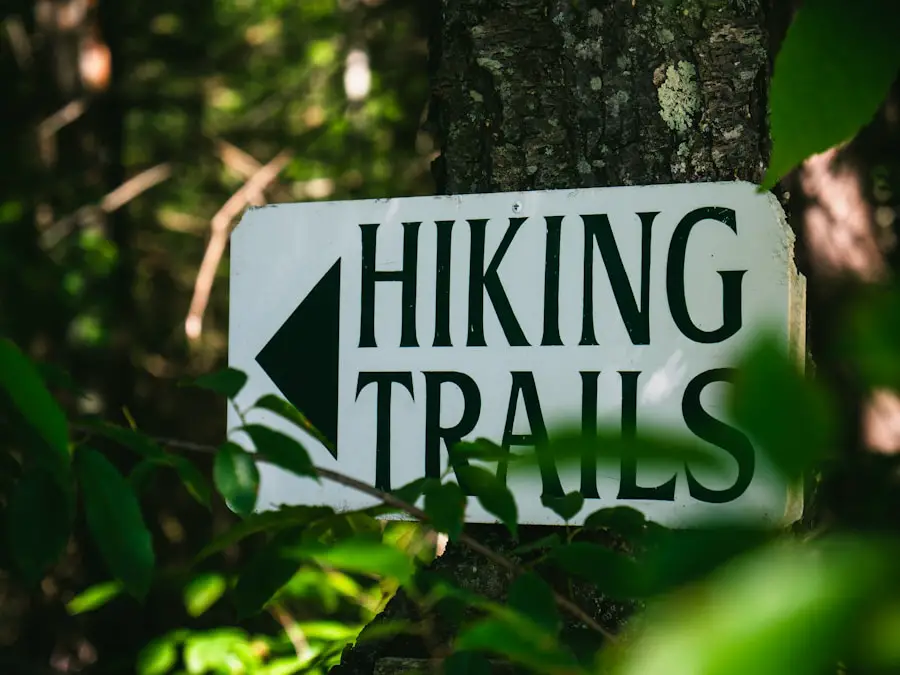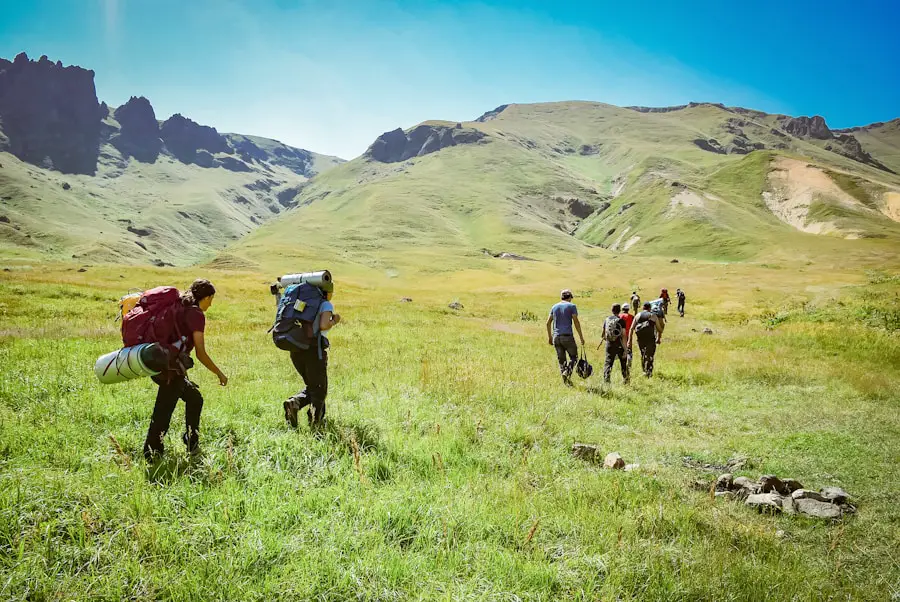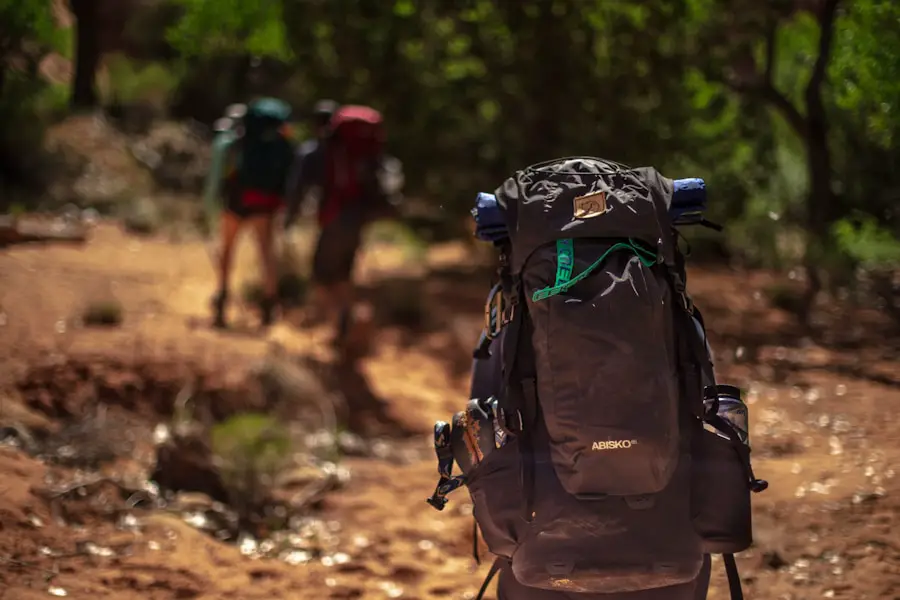The world of outdoor activities is vast and varied, encompassing a range of pursuits that can be broadly categorized into hiking, trekking, and mountaineering. While these terms are often used interchangeably, they each represent distinct experiences with unique characteristics. Hiking typically refers to walking on established trails or paths, often in natural settings such as parks or forests.
It is generally accessible to individuals of varying fitness levels and can be enjoyed as a leisurely activity or a more vigorous exercise. The trails can range from well-maintained paths suitable for families to more rugged routes that require a moderate level of fitness. Trekking, on the other hand, implies a more extended journey that often involves multi-day excursions through remote areas.
This activity usually requires a greater degree of physical endurance and may necessitate navigating challenging terrains without the convenience of established trails. Trekkers often carry their supplies, including food and camping gear, and may encounter diverse landscapes, from mountains to valleys. Mountaineering is the most demanding of the three, involving climbing mountains that may require technical skills, specialized equipment, and a deep understanding of the environment.
It often includes ascending peaks that are not only physically challenging but also present significant risks due to altitude, weather conditions, and the need for navigation skills.
Key Takeaways
- Hiking is defined as walking for extended periods of time in natural environments, while trekking involves longer distances and more challenging terrain.
- Essential equipment for hiking and trekking includes proper footwear, backpack, navigation tools, and weather-appropriate clothing.
- Terrain can range from easy, well-marked trails to difficult, rugged terrain with steep inclines and unpredictable weather conditions.
- Duration and intensity of hikes and treks can vary from a few hours to several days, with intensity ranging from leisurely to strenuous.
- The purpose of hiking and trekking can include physical exercise, mental relaxation, and connecting with nature, while goals may include reaching a specific destination or achieving personal milestones.
Equipment and Gear
Hiking Essentials
The essentials for hiking typically include sturdy footwear designed for comfort and support over various terrains. Hiking boots or shoes should provide adequate grip and protection against rocks and uneven surfaces. Additionally, hikers often carry a daypack containing water, snacks, a first-aid kit, a map or GPS device, and weather-appropriate clothing. Lightweight clothing made from moisture-wicking materials is preferred to ensure comfort during physical exertion.
Trekking Gear
Trekking gear is more extensive due to the longer duration of the activity. Trekkers need to invest in high-quality backpacks that can accommodate their gear for several days. These packs should be designed for weight distribution to prevent fatigue. Sleeping bags rated for the expected temperatures, portable cooking equipment, and food supplies are also essential components of trekking gear. Furthermore, trekkers must consider their clothing carefully; layering systems that include base layers, insulating layers, and waterproof outer layers are crucial for adapting to changing weather conditions.
Mountaineering Equipment
Mountaineering requires specialized equipment that goes beyond what is necessary for hiking or trekking. Climbers need technical gear such as harnesses, ropes, carabiners, ice axes, and crampons for traversing icy or steep surfaces. The choice of equipment is critical for safety and efficiency; thus, mountaineers often undergo training to learn how to use this gear effectively. Additionally, they must be equipped with navigation tools like altimeters and compasses, as well as emergency supplies tailored to high-altitude conditions.
Terrain and Difficulty

The terrain encountered in hiking, trekking, and mountaineering varies widely and significantly influences the difficulty level of each activity. Hiking trails can range from flat, well-marked paths in urban parks to steep inclines in mountainous regions. The accessibility of these trails makes hiking an appealing option for families and casual outdoor enthusiasts.
However, even within hiking, there are varying degrees of difficulty; some trails may include rocky sections or require stream crossings that can challenge less experienced hikers. Trekking often takes participants through more rugged landscapes where established paths may be less defined or entirely absent. This type of terrain can include dense forests, alpine meadows, or even desert landscapes.
The difficulty of trekking is compounded by factors such as elevation gain and the need to navigate using maps or GPS devices. Trekkers may encounter unpredictable weather conditions that can alter the landscape dramatically, making it essential to possess both physical stamina and navigational skills. Mountaineering presents the most formidable challenges in terms of terrain and difficulty.
Climbers often face steep rock faces, glaciers, and high-altitude environments where oxygen levels are significantly lower. The technical nature of mountaineering requires not only physical strength but also mental resilience and problem-solving skills. Climbers must assess risks such as avalanches or rockfalls while making decisions about their route and pace.
The combination of extreme conditions and technical challenges makes mountaineering a pursuit that demands extensive preparation and experience.
Duration and Intensity
| Activity | Duration (minutes) | Intensity (1-10) |
|---|---|---|
| Running | 30 | 8 |
| Swimming | 45 | 7 |
| Cycling | 60 | 6 |
| Weightlifting | 45 | 5 |
The duration and intensity of outdoor activities vary considerably among hiking, trekking, and mountaineering. Hiking can be a short excursion lasting just a few hours or an all-day adventure depending on the trail’s length and difficulty level. Many hikers enjoy half-day trips that allow them to return home in time for dinner while still experiencing the beauty of nature.
The intensity of hiking can also fluctuate; leisurely strolls on flat terrain contrast sharply with strenuous hikes that involve significant elevation changes. Trekking typically spans multiple days, with participants covering longer distances each day while carrying their gear. This extended duration increases the intensity of the activity as trekkers must maintain their energy levels over several days while navigating diverse terrains.
Trekkers often establish campsites along their route to rest and recuperate before continuing their journey. The physical demands of trekking require participants to be in good shape and prepared for long hours of walking each day. Mountaineering is characterized by its high intensity and extended duration as well.
Climbs can last several days or even weeks depending on the mountain’s height and the chosen route. The physical exertion involved in ascending steep slopes combined with the mental focus required for navigation and safety makes mountaineering one of the most demanding outdoor activities available. Climbers must also contend with altitude sickness as they ascend higher elevations, which adds another layer of complexity to their experience.
Purpose and Goals
The purpose behind engaging in hiking, trekking, or mountaineering varies among individuals and groups. For many hikers, the primary goal is to enjoy nature’s beauty while engaging in physical activity that promotes health and well-being. Hiking can serve as a form of relaxation or a way to connect with friends and family in an outdoor setting.
Some hikers may seek specific experiences such as birdwatching or photography opportunities along their chosen trails. Trekking often has a more adventurous spirit associated with it; participants may aim to explore remote areas or complete long-distance trails that offer unique cultural experiences along the way. For instance, treks like the Inca Trail in Peru not only challenge trekkers physically but also immerse them in rich historical contexts as they pass ancient ruins en route to Machu Picchu.
The goals of trekkers may include personal achievement through completing challenging routes or fostering a deeper appreciation for diverse ecosystems. Mountaineering typically embodies a pursuit of personal challenge and achievement at its core. Climbers often set ambitious goals such as summiting iconic peaks like Mount Everest or K2.
These objectives require extensive training, planning, and commitment due to the inherent risks involved in high-altitude climbing. For many mountaineers, reaching the summit represents not just a physical accomplishment but also a profound personal journey marked by perseverance against formidable odds.
Environmental Impact

The environmental impact of outdoor activities like hiking, trekking, and mountaineering cannot be overlooked as these pursuits take place in fragile ecosystems that require careful stewardship. Hiking trails can become eroded over time due to heavy foot traffic if not properly maintained. This erosion can lead to soil degradation and negatively affect local flora and fauna.
To mitigate these impacts, many parks implement measures such as trail hardening or rerouting paths to minimize damage. Trekking often occurs in remote areas where ecosystems are particularly sensitive to human activity. The presence of trekkers can disrupt wildlife habitats and contribute to littering if proper waste management practices are not followed.
Responsible trekking involves adhering to Leave No Trace principles which emphasize minimizing impact on the environment by packing out all waste, staying on designated paths, and respecting wildlife encounters. Mountaineering poses unique environmental challenges as well; climbers often leave behind waste such as food packaging or human waste at high camps if not properly managed. The accumulation of debris on popular climbing routes can tarnish pristine environments and pose hazards to wildlife.
Many climbing organizations advocate for clean-up initiatives on popular peaks to address these issues while promoting sustainable practices among climbers.
Safety and Preparation
Safety is paramount in all outdoor activities; however, the level of preparation required varies significantly between hiking, trekking, and mountaineering. For hikers embarking on short day trips, basic safety measures include informing someone about their plans, carrying a map or GPS device, wearing appropriate footwear, and being aware of weather conditions before heading out. Hikers should also be equipped with a first-aid kit for minor injuries that may occur along the trail.
Trekking demands more extensive preparation due to its multi-day nature; trekkers must plan their routes carefully while considering factors such as water sources and potential hazards like river crossings or wildlife encounters. Physical conditioning is essential for trekkers who will be carrying heavy packs over long distances; thus training in advance is highly recommended. Additionally, trekkers should familiarize themselves with local customs if traveling through culturally significant areas.
Mountaineering requires rigorous safety protocols due to its inherent risks associated with altitude and technical climbing challenges. Climbers must undergo training in skills such as rope management, crevasse rescue techniques, and navigation under adverse conditions before attempting significant ascents. Proper acclimatization is crucial for preventing altitude sickness; climbers often spend several days at base camps before ascending higher elevations to allow their bodies to adjust gradually.
Cultural and Social Aspects
The cultural and social dimensions of hiking, trekking, and mountaineering enrich these activities beyond mere physical exertion. Hiking often serves as a communal experience where friends or families bond over shared adventures in nature. Group hikes can foster connections among participants while promoting mental well-being through shared experiences in serene environments.
Trekking frequently intersects with cultural exploration; many treks pass through indigenous territories where trekkers have opportunities to engage with local communities. This interaction can lead to meaningful exchanges about traditional practices related to land use or conservation efforts undertaken by these communities. Trekkers may also participate in local festivals or events that enhance their understanding of regional cultures while contributing economically through tourism.
Mountaineering has its own unique social fabric characterized by camaraderie among climbers who share similar aspirations for adventure at high altitudes. Climbing expeditions often involve teamwork where individuals rely on one another’s skills for safety during challenging ascents. The bonds formed during these experiences can lead to lifelong friendships rooted in shared challenges faced on the mountain.
In conclusion, hiking, trekking, and mountaineering represent distinct yet interconnected outdoor pursuits that cater to various interests and abilities while offering opportunities for personal growth through engagement with nature’s beauty.
If you are interested in outdoor activities like hiking and trekking, you may also want to read about the best time to travel to the Bahamas. This article provides a comprehensive guide on when to visit this beautiful destination for the best weather and experiences. It’s important to plan your trips carefully, especially if you are traveling with your furry friend. Check out this helpful article.
FAQs
What is the difference between hiking and trekking?
Hiking and trekking are both forms of walking, but they differ in terms of the terrain, duration, and level of difficulty. Hiking is generally a shorter, less strenuous activity that takes place on well-marked trails, while trekking involves longer journeys over rougher terrain and often requires overnight camping.
What kind of terrain is typically associated with hiking?
Hiking is typically associated with well-maintained trails that are relatively easy to navigate. These trails can be found in national parks, forests, and other natural areas, and are often marked with signs and maps to help hikers stay on course.
What kind of terrain is typically associated with trekking?
Trekking is typically associated with more rugged and remote terrain, such as mountains, deserts, or jungles. Treks often involve navigating through unmarked or poorly marked trails, and may require crossing rivers, climbing steep slopes, or dealing with other challenging conditions.
What is the duration of a typical hiking trip?
Hiking trips are usually shorter in duration, often lasting just a few hours or a full day. Some longer hikes may last for a few days, but they are generally not as lengthy as trekking expeditions.
What is the duration of a typical trekking trip?
Trekking trips can last for several days or even weeks, as they often involve covering long distances and may require camping overnight in remote areas. Trekking expeditions can be physically demanding and require careful planning and preparation.
What kind of equipment is typically used for hiking?
Hiking typically requires lighter gear, such as comfortable walking shoes, a daypack, water, snacks, and possibly a map or GPS device. Hikers may also bring trekking poles for added stability on uneven terrain.
What kind of equipment is typically used for trekking?
Trekking requires more extensive gear, including a sturdy backpack, camping equipment (such as a tent, sleeping bag, and cooking supplies), and possibly specialized gear for navigating challenging terrain, such as crampons or ice axes for mountain treks. Proper clothing and footwear are also essential for trekking.
